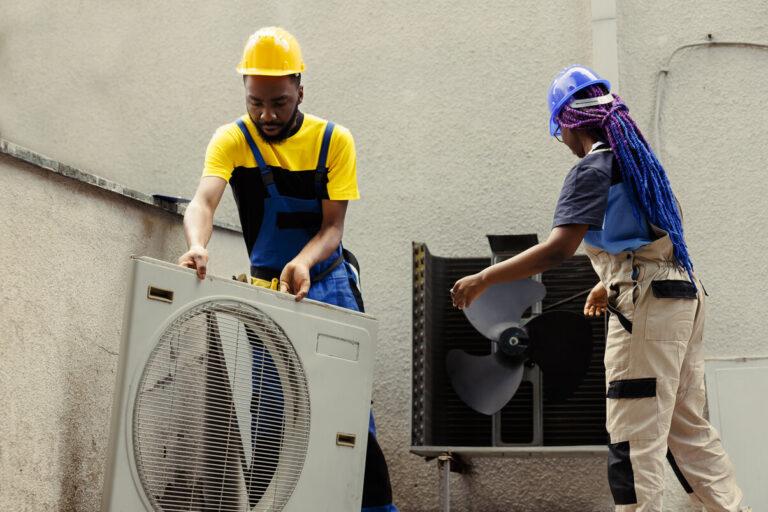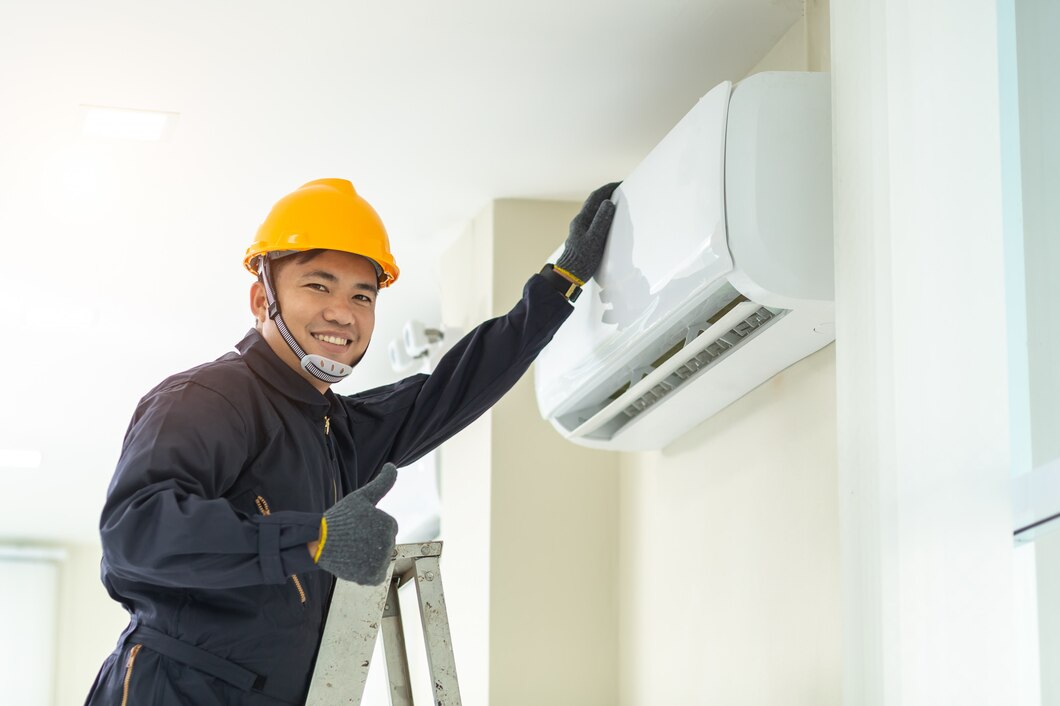Replacing your air conditioner is a significant task that can impact your home’s comfort and energy efficiency. Whether your current unit is failing or you want a more energy-efficient model, understanding the AC replacement process can help ensure a smooth transition. Knowing when to replace your AC unit and what factors to consider can make the process less overwhelming.
Signs You Need an AC Replacement
Over time, air conditioners naturally degrade, making it important to recognize the signs that indicate you need an AC replacement. Knowing these signs helps you act before your current unit fails completely, ensuring continuous comfort in your home.
- Frequent Repairs: If your air conditioner requires frequent repairs, it might be more cost-effective to replace it. Constant repair bills add up and don’t offer a long-term solution.
- Inadequate Cooling: When your AC struggles to cool your home evenly or fail to maintain a consistent temperature, it may be nearing the end of its life. Uneven cooling can also result from other issues, but if repairs don’t solve the problem, a replacement might be necessary.
- High Energy Bills: An aging air conditioner can become inefficient, resulting in higher energy bills. If your energy costs have risen without a significant change in usage, your AC unit could be the culprit.
- Strange Noises and Odors: Unusual sounds like grinding, squealing, or rattling, as well as odd odors coming from your unit, suggest that significant components could be failing. These issues often indicate that a replacement is more cost-effective than a repair.
- Age of the Unit: Most air conditioners last about 10-15 years. If your unit is within or beyond this range, investing in a new, more efficient model could save money on energy and repair costs.
Recognizing these signs allows you to plan for an AC replacement before experiencing a complete breakdown, ensuring your home remains cool and comfortable.
Choosing the Right AC Unit
Choosing the right AC unit involves several considerations. A well-selected unit meets your cooling needs efficiently and lasts for many years. Evaluating these factors ensures you make an informed decision.
- Assess Your Needs: Consider the size of your home and specific cooling requirements. An undersized unit will struggle to cool your space, while an oversized unit will cycle on and off too frequently, wasting energy and reducing comfort.
- Energy Efficiency: Look for energy-efficient models. Units with higher SEER (Seasonal Energy Efficiency Ratio) ratings offer better efficiency, translating to lower energy bills over time.
- Types of Units: There are different types of AC units to choose from, including central air conditioners, ductless mini-splits, and window units. Each has its pros and cons. For instance, central air conditioners are great for whole-home cooling, while ductless mini-splits offer flexibility for spots that don’t connect to your existing ductwork.
- Budget: Determine your budget for both the purchase and installation. While it might be tempting to choose the least expensive option, investing in a higher-quality, more efficient unit can offer greater long-term savings.
- Professional Advice: Consulting with our professionals can provide you with valuable insights. They can assess your space, discuss your needs, and recommend the best unit for your situation.
By considering these factors, you can choose an AC unit that is both effective and efficient, ensuring your home remains comfortable throughout the hot months.
The AC Replacement Process
The AC replacement process involves several essential steps that ensure your new unit operates efficiently and effectively. Understanding these steps can help you prepare and make the process as smooth as possible.
- Initial Assessment: Our professionals begin by assessing your current system and discussing your needs and preferences. This step helps determine the best type of unit for your home and ensures that the new system meets your specific requirements.
- Removing the Old Unit: The next step involves safely removing the existing air conditioner. This process includes disconnecting electrical components, refrigerant lines, and ductwork. Our technicians take care of disposing of the old unit responsibly.
- Installing the New Unit: The new air conditioner is then installed, starting with the placement of the indoor and outdoor units. Proper installation is crucial for optimal performance. Our technicians ensure that all components, such as the evaporator coil, condenser, and ductwork, are correctly connected and sealed.
- Testing and Calibration: After installation, the system is thoroughly tested. Our professionals check for any leaks, ensure proper airflow, and calibrate the thermostat. This step guarantees that your new air conditioner operates efficiently and provides consistent cooling.
- Final Walkthrough: Once the installation is complete, our technicians conduct a final walkthrough. They explain the functions of your new system, provide maintenance tips, and answer any questions you may have. This ensures you are well-informed about operating and maintaining your new AC unit.
Following these steps ensures a seamless AC replacement process, providing you with a reliable and efficient cooling system.
Post-Installation Maintenance and Tips
Regular maintenance is key to keeping your new AC unit running smoothly and extending its lifespan. Here are some tips to help you maintain your system post-installation.
- Regular Filter Replacement: Change or clean the air filters every 1-3 months. Dirty filters reduce efficiency and can lead to system breakdowns. Regularly replacing filters ensures optimal airflow and indoor air quality.
- Keep the Area Around the Unit Clear: Make sure there is at least two feet of clearance around the outdoor unit. Remove any debris, leaves, or plants that can obstruct airflow and reduce efficiency.
- Schedule Professional Maintenance: Annual maintenance checks by our professionals can identify and resolve potential issues early. Regular tune-ups include cleaning coils, checking refrigerant levels, and inspecting all components for wear and tear.
- Check Thermostat Settings: Ensure your thermostat is set to the correct temperature. Programmable thermostats can help optimize energy usage by adjusting the temperature based on your schedule.
- Monitor the System for Issues: Pay attention to any unusual noises, odors, or performance changes. If you notice any issues, contact our technicians immediately to prevent further damage.
By following these post-installation maintenance tips, you can keep your new AC unit in excellent condition, ensuring efficient and reliable performance.
Conclusion
Replacing your air conditioner can enhance your home’s comfort and efficiency. From recognizing the signs that you need an AC replacement to choosing the right unit and understanding the replacement process, each step is crucial. Proper post-installation maintenance further ensures the longevity and efficiency of your new system.
Our professionals are dedicated to providing a seamless AC replacement experience, from initial assessment to final installation and maintenance guidance. With our expertise, you can feel confident that your home will remain comfortable throughout the year.
For expert AC replacement in Cerritos and Norwalk, CA, and to ensure your system runs efficiently, contact Power Pro Plumbing Heating & Air today. Our team is here to provide reliable and professional solutions for all your HVAC needs.










